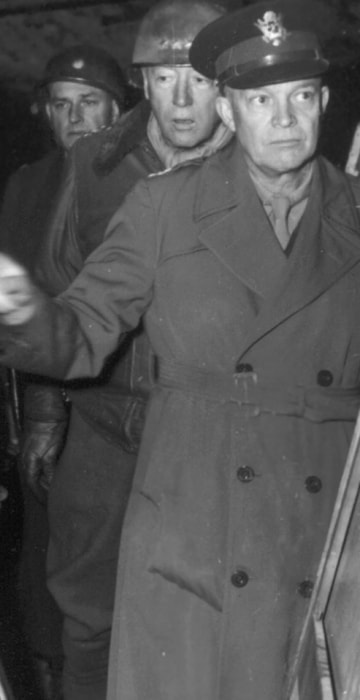
World
Art looted by Nazis
More than 20 percent of the art of Europe was looted by the Nazis under Hitler, and as many as 100,000 works are still thought to be missing, according to the U.S. National Archives.
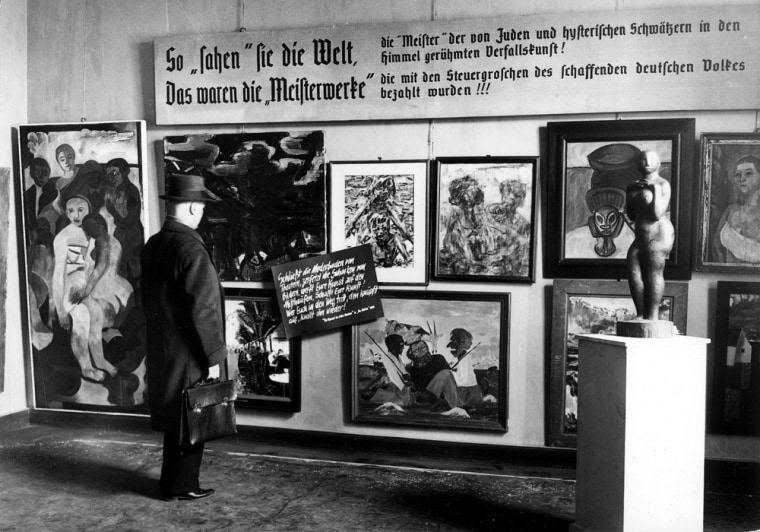
'Degenerate Art' on display
A man looks at pieces from a Nazi-curated traveling exhibition called "Degenerate Art," at its second stop at the Haus der Kunst in Berlin on Feb. 24, 1938. The Nazis used the term "degenerate" to describe virtually all modern art. A vast collection of modern art branded "degenerate" and seized by the Nazis, which includes works by Picasso, Matisse and Chagall, has been discovered in a Munich apartment among stacks of rotting groceries, the German magazine Focus reported.

Presented for inspection
Gen. Dwight D. Eisenhower inspects paintings in a salt mine at Merkers, near Gotha, Germany, where the Nazi government stored art treasures and gold, plundered in occupied countries, on April 12, 1945. The Supreme Allied Commander was accompanied by Gen. Omar N. Bradley, left, and Lt. Gen. George Patton Jr., immediately behind him. More than 20 percent of the art of Europe was looted by the Nazis under Hitler, and as many as 100,000 works are still thought to be missing.
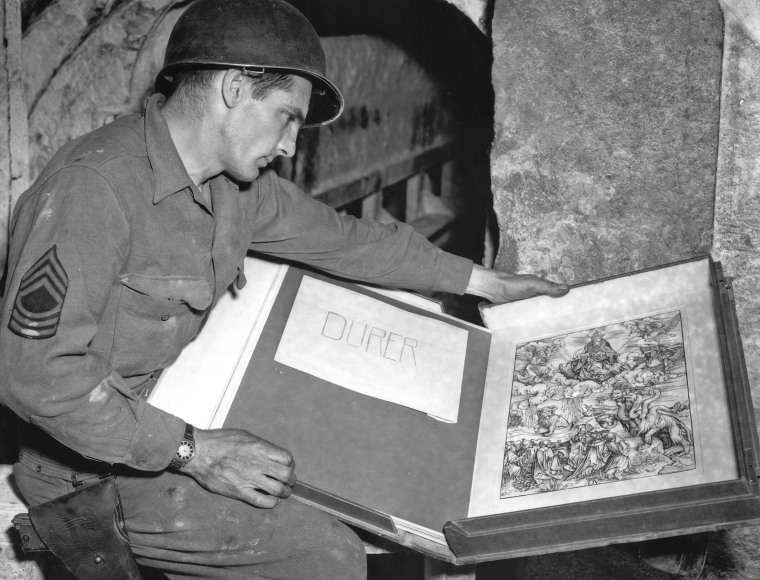
A find in the salt mine
U.S. Army Sgt. Harold Maus of Scranton, Pa., looks over an engraving by German artist Albrecht Durer, which was found among other art treasures at a salt mine in Merkers, Germany, in this May 13, 1945, photo released by the U.S. National Archives.
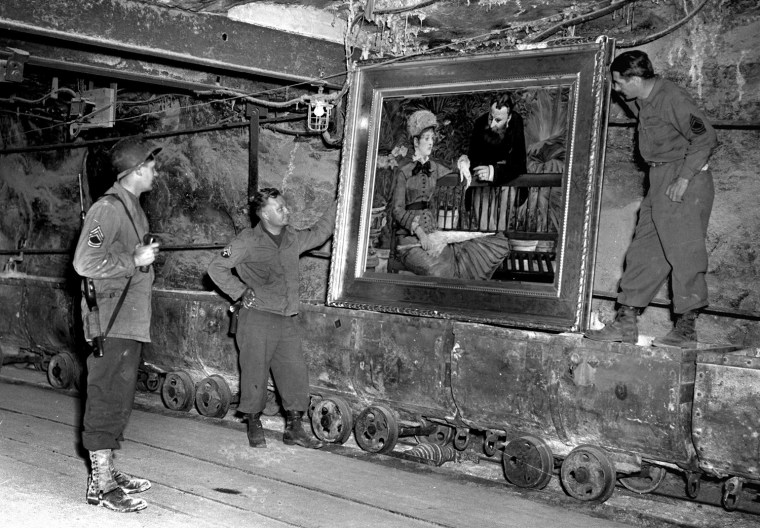
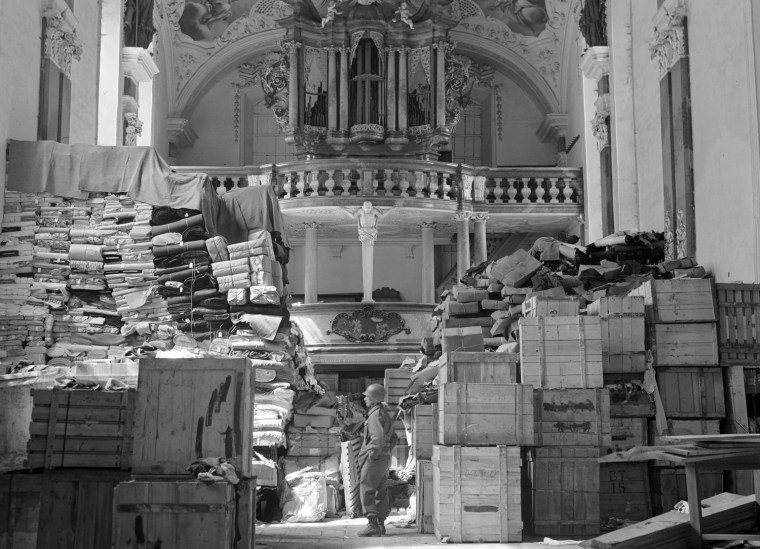
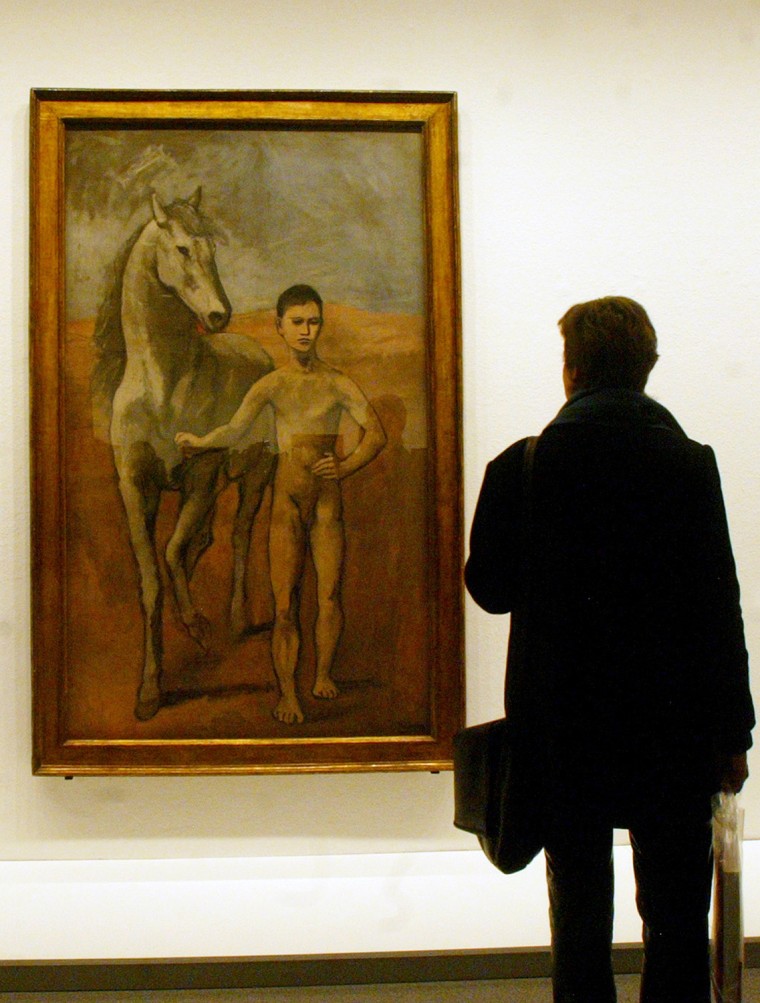
Settlement for a Picasso
A visitor looks at Pablo Picasso's painting "Boy Leading a Horse" at the New National Gallery in Berlin in 2004. Two leading New York City museums, the Museum of Modern Art and the Guggenheim, remain the owners of this Picasso painting after settling claims by the heirs of a Jewish banker that the family was forced by the Nazis to sell it. The settlement was announced in 2009 as the case was about to go to trial.
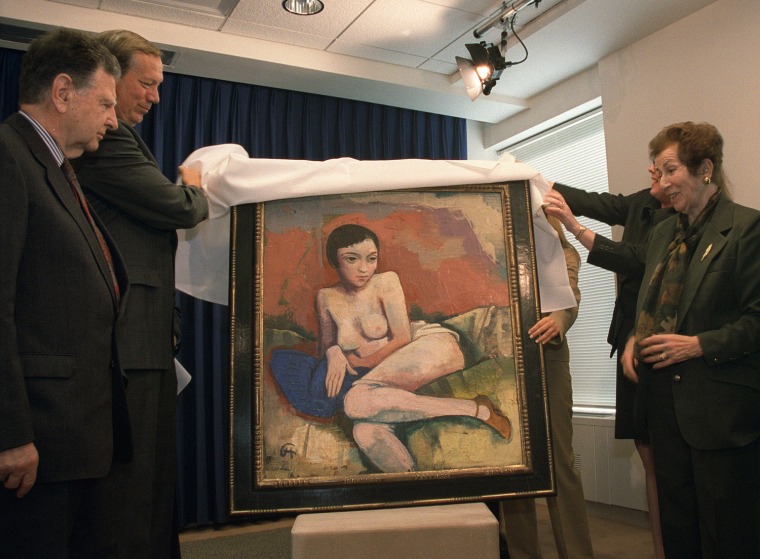
Returned after decades
Then-New York Gov. George Pataki, second from left, helps unveil "Seated Nude on Blue Cushion," a 1927 work by Karl Hofer, as Ruth Haller and her husband, Chaim, look on during a news conference in 2001. Two paintings looted by the Nazis in the 1930s were returned to Ruth Haller, the victim's daughter, in a settlement brokered by the Holocaust Claims Processing Office of the state Banking Department. The paintings were the second and third to be returned to the same family.
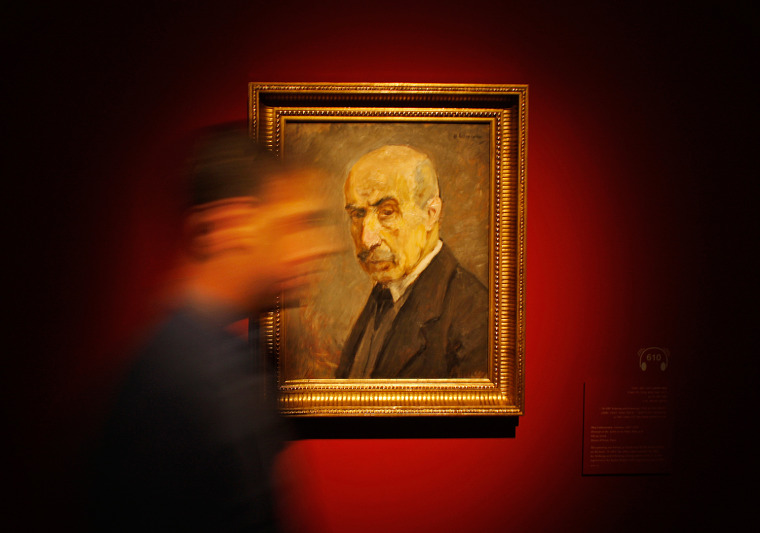
Reclaiming art and history
A painting by the German artist Max Liebermann is seen as part of the exhibition "Looking for Owners" at the Israel Museum in Jerusalem in 2008. The exhibit featured art with a tragic history — stolen from the museums and salons of Europe by the Nazis during World War II and never reclaimed by its rightful owners, many of whom died in the war. People who recognize one of the paintings as having belonged to their family can file a claim with the Israel Museum or the French government and take it home.
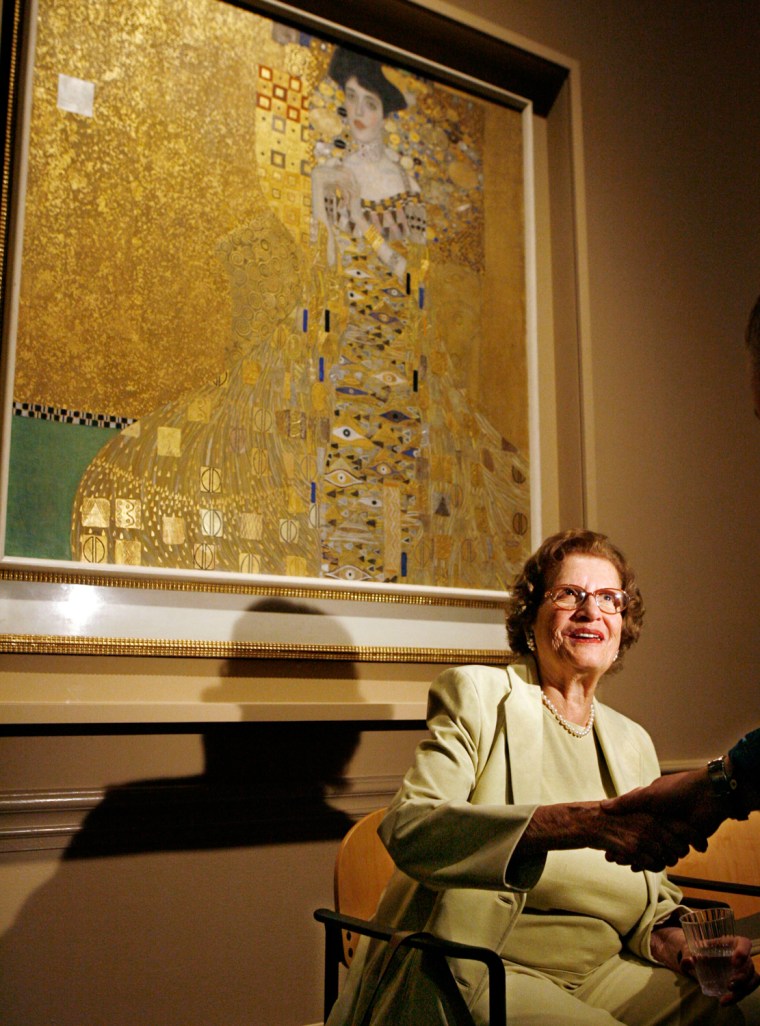
Seen for the first time again
Maria Altmann greets a well-wisher in front of a Gustav Klimt painting titled "Adele Bloch-Bauer 1" at the Los Angeles County Museum of Art in 2006. The last time Maria Altmann had seen the Klimt paintings was when she was a child in Austria, before the Nazis took over in 1938 and ripped the precious works of art from her family. Earlier in 2006, an Austrian arbitration court had ruled that five paintings by Klimt, including one with an estimated value exceeding $120 million, had to be returned by the National Gallery in Vienna to Altmann, a retired clothing boutique owner.